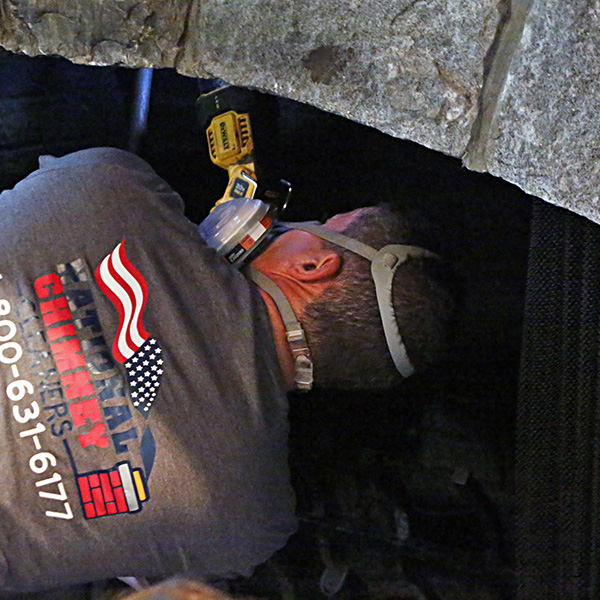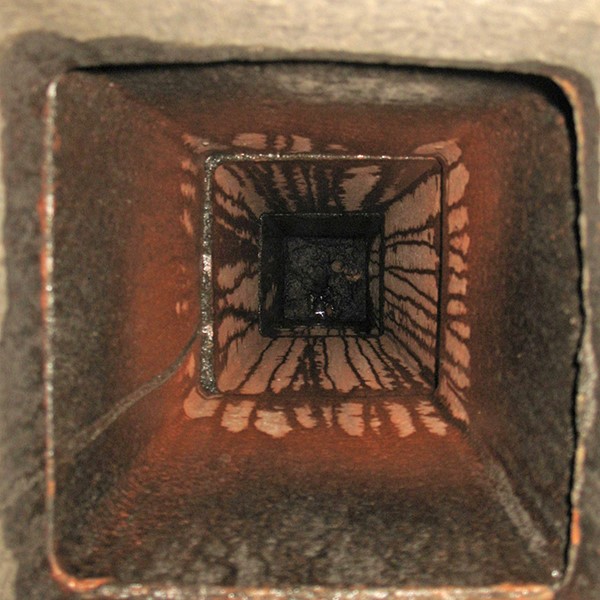7 Important Steps In Preparing Your Fireplace & Chimney For Winter
Your goal is safe, efficient performance from your fireplace each winter season. Here are seven steps you can take to reach that goal.
 1. Clean and visually inspect the firebox
1. Clean and visually inspect the firebox
Remove leftover ashes and soot buildups so you can clearly see the condition of the firebox. Be aware of anything that looks damaged including cracked/loose bricks and deteriorated mortar joints.
2. Evaluate the fireplace damper
Open and close the damper. Is the movement smooth and easy? Or do you hear squeaky grinding noises? A noisy damper could have a lot of rust, which will keep it from opening and closing completely.
3. Look over the chimney
You can’t see all the way down into your chimney flue (that’s a job for a chimney inspector – see below), but you can easily check out the exterior masonry. Look for brick damage, crumbling mortar, white staining (water seeping into the bricks), black stains at the top (could be the result of unknown chimney fires) and signs of structural leaning.
4. Schedule a chimney inspection
You can spot obvious signs of chimney and fireplace damage, but a licensed inspector can see things you can’t. It’s a good practice to have your chimney inspected annually, preferably just before the winter season starts.
A quality inspection can save you thousands of dollars in repair costs by catching early signs of damage and malfunction so you can get them fixed fast. Many inspectors also perform fireplace and chimney repairs as well as chimney cleaning.
5. Have your chimney professionally cleaned
Annual chimney cleaning (chimney sweeping) is recommended by the Chimney Safety Institute of America (CSIA) and just about every fire safety and hearth organization in the U.S. The key purpose is to remove flammable creosote.
A byproduct of wood combustion, creosote can appear as a flakey, puffy, sticky or solid substance as it clings to the walls of your chimney liner. The majority of chimney fires – and many house fires – are caused by ignited creosote.
6. Be aware of a chimney fire
Chimney fires can be large or small. Watch and listen for these common chimney fire signs while your fireplace is in use:
- An odd clicking or tapping sound
- A rumbling sound like from a distant train
- Dense dark smoke exiting from either end of the chimney
If you notice any of these signs, call 911 immediately and extinguish the fire in the firebox if you can do so safely.
 7. Be aware of a chimney leak
7. Be aware of a chimney leak
Chimney leaks can happen for a variety of reasons, and water can enter the system through several different areas including a damaged chimney cap, deteriorated chimney crown, warped roof flashing and cracked masonry.
If you spot any of these leaky chimney symptoms, call out a chimney technician:
- Damp sections of the ceiling or walls near the fireplace
- White staining (efflorescence) on exterior masonry
- Water in the firebox
- Musty odors coming from the fireplace or in the attic and crawl spaces
- Rusty, hard-to-operate fireplace damper
Keep your chimney safe and efficient this winter
National Chimney Service provides exactly what you need to ensure safety and optimal performance from your fireplace and chimney all winter long.
If you live in Morris County, NJ, or Fairfield County, CT, call 800-631-6177 to inquire about chimney and fireplace inspections, chimney cleaning, and a full menu of chimney and fireplace repair and restoration services.

 1. Clean and visually inspect the firebox
1. Clean and visually inspect the firebox 7. Be aware of a chimney leak
7. Be aware of a chimney leak